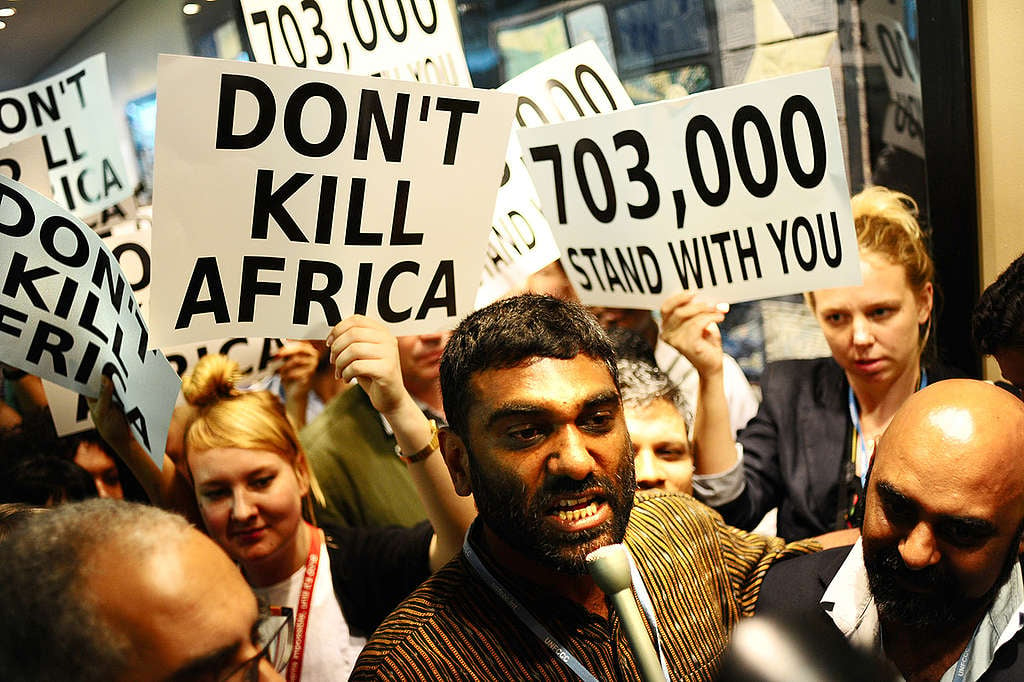It is no exaggeration to say that South Africa has toxic, filthy air. This is particularly true in the Highveld, Vaal and Waterberg, where the Department of Environment, Forestry and Fisheries has declared so called ‘Priority Areas’. These are meant to be focal points in dealing with the shockingly high levels of air pollution, but in reality, we have seen little improvement in air quality.
There are a number of ingredients in the toxic soup that we breathe in day after day, with pollution coming from cars and trucks, factories, burning coal in houses, smelters, dust, coal being used for power generation, and in industry more generally. At the heart of it all: Eskom and Sasol; the country’s two largest emitters, they contribute to ‘airpocalyptic’ levels of pollution due to their reliance on coal.
The word ‘airpocalypse’ was first used in 2013 in China to explain the levels of toxic smog that people living in Beijing, in particular, were exposed to, when airborne smog particles peaked at 35 times the World Health Organisation’s recommended limit. Increasingly, we’re starting to use this term to describe South Africa’s air, as pollution that is off the scale becomes a reality for us too.
As you can imagine, companies are not that keen to be fully transparent about exactly how much pollution they are creating, and tracing pollution back to its source can seem overwhelmingly difficult. In addition, a number of our air pollution monitoring stations are non-functioning. Satellites are increasingly becoming our ‘eye-in-the-sky’ as they are able to track different kinds of pollution in unprecedented detail, and analysts are able to overlay that with emission sources and point to the polluters responsible.
The news is pretty dire for South Africa. We have the most polluting cluster of coal-fired power stations in the world in Mpumalanga, with no less than 12 coal-fired power stations in the province.
Satellite data analysis has revealed that the province is the fourth worst NO2 pollution hotspot in the world, and the latest NASA data has revealed that the Kriel area in Mpumalanga is the second worst sulphur dioxide (SO2) pollution hotspot in the world. These are rankings that we want to be nowhere near the top of. Both NO2 and SO2 are dangerous pollutants in and of themselves, but both of them also contribute to the secondary formation of the most dangerous pollutant of them all, fine particulate matter, which expert research shows is causally linked to a number of severe conditions, including lung cancer.
Thousands of premature deaths and disease are the result.
Scarily, the Minister of Environment, Forestry and Fisheries is currently considering weakening South Africa’s SO2 emission limits because industry are maintaining that they’re unable to comply with these standards. This is despite the dire health impacts caused by this pollutant. At the same time, both Sasol and Eskom, among other entities, have applied to postpone and/or suspend compliance with South Africa’s Minimum Emission Standard (MES), which includes SO2 emission standards.
These standards are already weak compared to both China and India. Unfortunately, the government seems all too willing to allow further delays in compliance with the MES and, in some cases, it is considering permanent exemptions from compliance with these essential pollution laws.
The chronic air pollution in the Highveld and resultant breach of constitutional rights is at the centre of a landmark Deadly Air lawsuit that has been filed by groundWork and Vukani Environmental Movement in Action to compel the Department of Environment, Forestry and Fisheries to take further steps to enforce its own air quality management plan in order to reduce air pollution in the Mpumalanga Highveld.
All of this paints a pretty grim picture, but we do have a way out.
Eskom and Sasol must not be allowed any more space to pollute the air that we breathe. In the face of overwhelming evidence that our air is toxic, our National Air Quality Officer must show up for the job of protecting people’s health by enforcing compliance with our already woefully inadequate Minimum Emission Standards and Minister of Environment, Forestry and Fisheries, Barbara Creecy, must not weaken our SO2 limits.
Air pollution and the climate emergency share the same solution. Governments across the world owe it to citizens to stop investing in fossil fuels and to urgently shift to safer, more sustainable sources of energy.
 Get Involved
Get Involved
